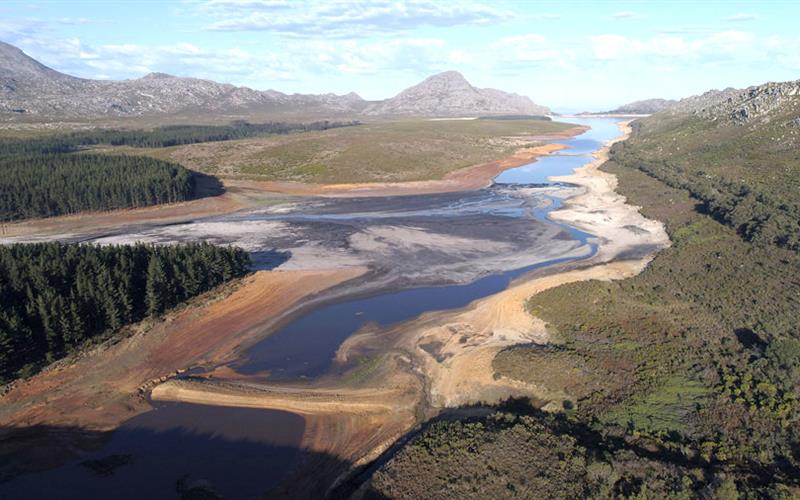OpenAI has launched GPT 5.2, a major model upgrade now available in both the API and ChatGPT. It is described as the company’s most…
Dam levels drop 0.9% as Cape Town struggles to save water

Good news, Cape Town. Well, sort of.
While last week’s dam report saw a dire dam level loss of 1.4%, this week’s decrease is much smaller. The City of Cape Town’s latest data set suggests that just 0.9% was lost within the past seven days; the combined storage levels are now 26.3%.
Follow Memeburn’s coverage of Cape Town’s water crisis here.
This is largely thanks to a decrease in overall consumption from 608-million litres per day to 580-million litres. Well done, Cape Town, although this figure is still well above the City’s target of 450-million litres per day, or 50 litres per person.
The agriculture sector now uses just 39% of that water according to the report, with the City of Cape Town consuming 55%.
Cape Town’s dam levels
In terms of dam storage, five of Cape Town’s six large dams have seen another week of dipping levels.
The Theewaterskloof Dam is now just 13.3% full, down by 0.9% over the previous week. At the current rate, the dam will hit its 10% minimum by the end of February. The second largest dam in the system, the Voëlvlei, dropped by 0.5% to 18.1% full.
Franschhoek’s Berg River Dam fell by 1.3% to 53.7%, but bucks another trend. It currently holds more water than it did at the same point in 2017.
The Western Cape Water Supply System’s (WCWSS) three smaller dams were a mixed bag.
Steenbras Upper Dam shed 4.5% of its storage, and now sits at 85.7%. Its Lower (and larger) companion fell by 1.7%. It’s now 43.8% full.
The Wemmershoek, however, was the only reservoir to see an increase this week. It regained 0.1% of its stores, and still sits at 52.4% full. Like the Berg River, it currently holds more water than it did at the same point last year.
In total, the WCWSS holds 8.4-billion fewer litres than the previous week — at the current consumption rate, that’s around two weeks’ worth of water.
Cape Town’s rainfall
Rainfall figures remain uninspiring, despite last weekend’s cut-off low system which brushed over the province.
On 22 January 2018, the Theewaterskloof and Voëlvlei catchment areas received some 1.7mm and 3mm respectively. As a result, the Theewaterskloof has received 4.7mm more than its long-term average, the City of Cape Town’s data suggests.
But don’t get too excited just yet.
In a press release issued last week, the South African Weather Service (SAWS) confirmed that autumn is likely to remain a relatively dry season for the Western Cape.
“[I]t is extremely unlikely that rainfall totals will exceed 150mm for the months of January, February and March 2018, since it never happened in history,” SAWS explained.
“For April 2018, however, there is a 44% possibility for the monthly rainfall total to fall in the 51-100mm range, while there is a 58% possibility that rainfall totals for April 2018 will not be higher than 100mm.”
As for Day Zero, the City of Cape Town has noq pushed back the date by four days, to the 16th April 2018. On Sunday it published a full report of its plans for when, or if, Day Zero arrives.
Edit: the article has been updated to include information regarding Day Zero.
Feature image: Steenbras Dam, April 2017 via City of Cape Town



